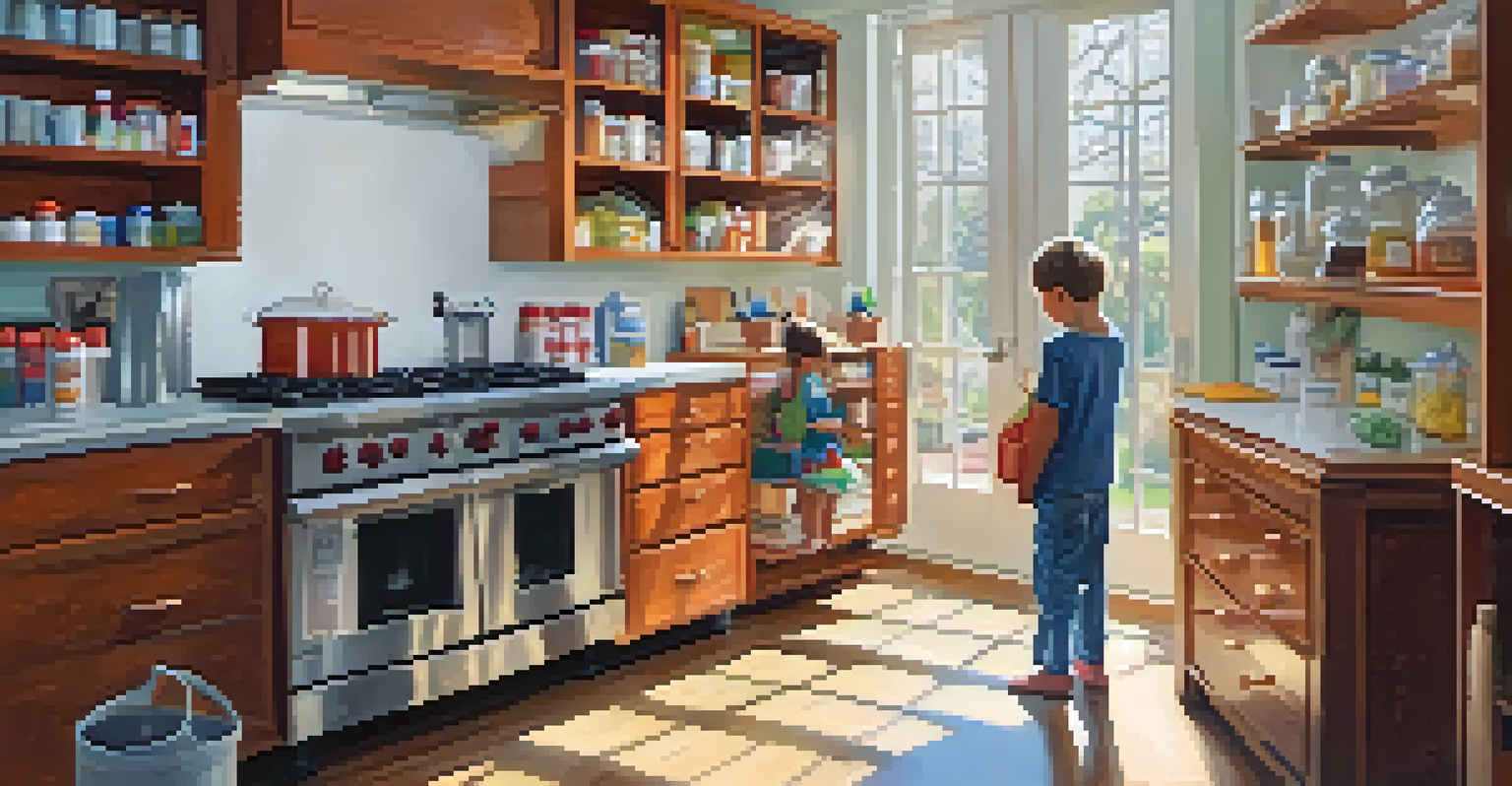Home Maintenance Checklist: Safety Measures for Children

Regularly Check Smoke and Carbon Monoxide Detectors
One of the first steps in child safety at home is ensuring that smoke and carbon monoxide detectors are functioning properly. These devices are your first line of defense against fire and toxic gas, so regular checks are essential. Make it a habit to test them monthly and replace batteries at least once a year.
Safety isn’t expensive, it’s priceless.
Consider installing detectors in every bedroom and common areas to maximize safety. If your detectors are more than ten years old, it might be time for an upgrade. Newer models often come with enhanced features like voice alerts, which can be particularly helpful in reducing confusion during an emergency.
Involve your children in the process by teaching them how these devices work. This not only educates them about safety but also empowers them to take action if they hear an alarm. Remember, a well-informed child is a safer child.
Secure Heavy Furniture and Appliances
Furniture and appliances can pose significant hazards if not properly secured. Heavy items like bookshelves, dressers, and televisions can tip over, especially if children are climbing on them. To prevent accidents, use wall anchors or brackets to secure these items to the wall.

Additionally, ensure that your home’s layout encourages safety. Keep heavy items lower to the ground and avoid placing them near beds or play areas. This simple adjustment can significantly reduce the risk of tipping.
Regularly Check Safety Detectors
Ensure smoke and carbon monoxide detectors are functioning properly by testing them monthly and replacing batteries annually.
Teach your kids about the importance of not climbing on furniture. Reinforcing this lesson can help them understand the dangers and encourage safer play habits. It’s a proactive way to foster a culture of safety in your home.
Childproof Electrical Outlets and Cords
Electrical outlets are often an overlooked safety concern for young children. Outlets should be equipped with safety covers to prevent curious fingers from exploring. These covers are inexpensive and can easily be installed, providing peace of mind for parents.
An ounce of prevention is worth a pound of cure.
Additionally, be mindful of electrical cords that are within reach. Tuck them away or use cord clips to keep them organized and out of sight. Long cords can be enticing for children, leading to potential accidents like tripping or pulling down appliances.
Incorporating these small changes can significantly enhance your home’s safety. By creating a less enticing environment for exploration, you keep your little ones safe while allowing them to roam freely.
Maintain a Safe Outdoor Environment
Safety doesn’t end at your front door; your outdoor space requires attention too. Regularly inspect your yard for hazards like sharp tools, chemicals, or uneven terrain that could pose risks to children. Keeping your outdoor area tidy not only makes it safer but also more enjoyable for family activities.
Consider installing safety fences around pools or play areas to prevent unsupervised access. These barriers act as a physical reminder for children about boundaries and can help prevent accidents. It’s a small investment that pays off when it comes to peace of mind.
Secure Heavy Furniture Properly
Use wall anchors for heavy furniture to prevent tipping and educate children about safe play habits.
Finally, teach your children about outdoor safety. Discuss the importance of staying within safe areas and not engaging with any unknown items they might find outside. This empowers them to make wise choices about their safety while playing.
Store Hazardous Materials Out of Reach
Household cleaners, medications, and other hazardous materials should always be stored out of reach of children. A common mistake is assuming that child-resistant caps are enough. While they can help, it’s best to keep these items in high cabinets or locked storage to prevent accidents.
Consider organizing these materials in a designated area that is only accessible to adults. Labeling shelves can also serve as a reminder for all family members to keep hazardous items secure. This small step is crucial in maintaining a safe environment.
In addition to storing items safely, educate your children about the dangers of unknown substances. Teaching them to recognize and avoid these materials can empower them to make safe choices, even when you’re not around.
Inspect Play Equipment Regularly
If you have outdoor play equipment, regular inspections are crucial for safety. Check for any signs of wear and tear, such as loose bolts, rust, or splintered wood. Addressing these issues promptly can prevent injuries and ensure a safe play experience.
Ensure that the play area is safely cushioned with materials like mulch or rubber mats to reduce the impact of falls. This simple addition can make a significant difference in injury prevention. Remember, the safer the play area, the more fun your children will have.
Create a Family Emergency Plan
Develop and practice a family emergency plan to prepare everyone for various scenarios, ensuring safety and confidence.
Lastly, involve your kids in the inspection process. Teaching them to recognize safe and unsafe conditions fosters responsibility. It also provides an opportunity for quality time spent together while reinforcing safety awareness.
Create a Family Emergency Plan
Having a family emergency plan is vital for child safety, and it’s never too early to start preparing. Sit down with your family and discuss various scenarios, such as fires, natural disasters, or health emergencies. Make sure everyone knows the escape routes and designated meeting points outside the home.
Conduct regular drills so that your children feel confident and know what to do in case of an emergency. Practicing these scenarios can help reduce panic and confusion, making it easier for everyone to respond effectively when it counts.

Encouraging kids to participate in creating the plan also empowers them. They’ll feel more in control and less anxious about potential emergencies. A well-prepared family is a safer family.